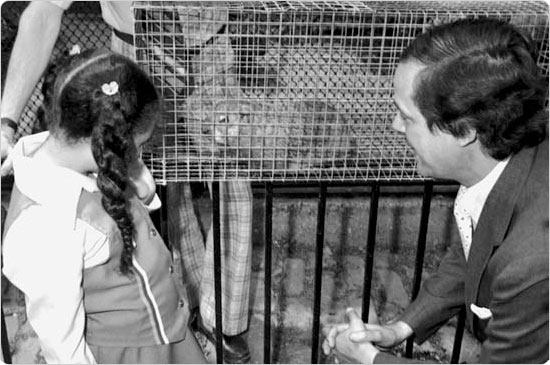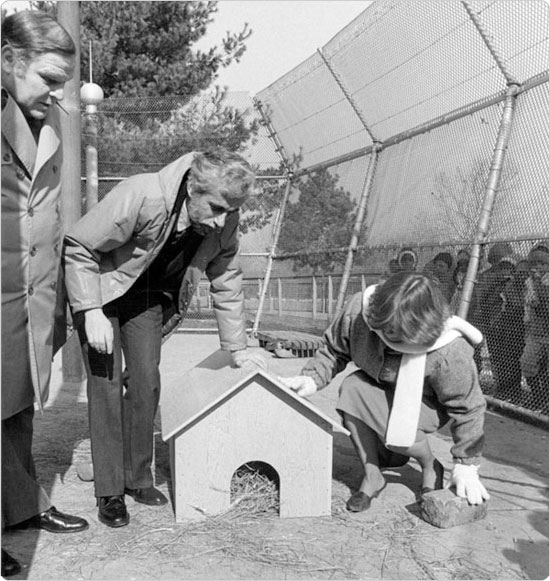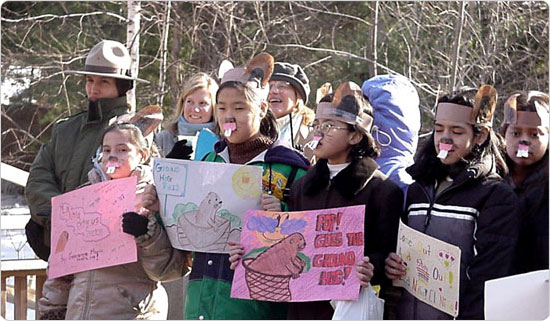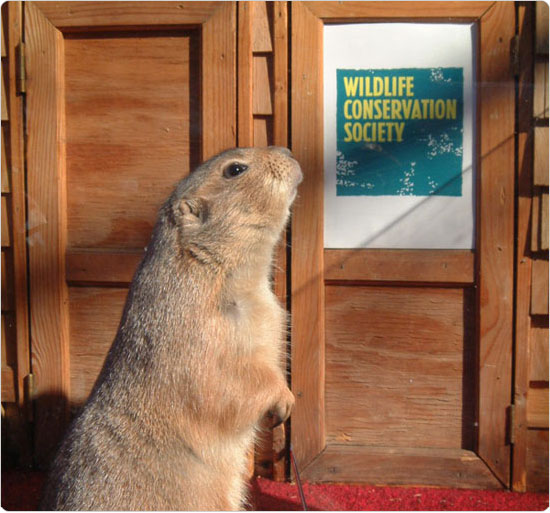History of Groundhog Day in Parks
Although the Punxsutawney, Pennsylvania groundhog Punxsutawney Phil has been forecasting whether there will be six more weeks of winter each Groundhog Day (February 2) since 1887, New York City parks have several rodents of their own that forecast the likelihood of a longer winter or an expedited spring.
The general idea behind groundhog weather prognostication is simple: if the groundhog sees his shadow, there will be six more weeks of wintry weather and if not, spring will come sooner rather than later. Groundhog Day originates from the folk belief in the predictive powers of the late–winter emergence of hibernating creatures, and the Pennsylvania Dutch are believed to have brought the tradition to America in the 18th century.
Groundhogs are rodents, like mice and rats, but are also related to other rodents such as chipmunks and squirrels. Also known as woodchucks or whistle pigs, the animals are active during the day and eat vegetation like grasses, clover, and alfalfa (though the groundhog at the Staten Island Zoo apparently prefers corn and sweet potatoes). The groundhog is found in lowland areas across the Northeast and central part of the United States. They can grow to be over two feet long and may weigh up to 30 pounds. From time to time wild woodchucks (or groundhogs) visit city parks—one such guest, “Fifth Avenue Phil,” made his home in Central Park near the zoo for a period during the mid 1980s. The Parks Department's Natural Resources Group also notes sightings in the Bronx near Pelham Bay Park and on Staten Island near Conference House Park.
Staten Island Chuck
Charles G. Hogg—“Staten Island Chuck”—is the best–known groundhog–meteorologist in New York, and he resides at the Staten Island Zoo in Barrett Park on Staten Island. Since 1981, Staten Island Chuck has had a strong record in predicting the weather (21 out of 27 years). The formula for determining whether Chuck has been correct is not an exact science. Although it is difficult to define “winter weather,” the staff of the Staten Island Zoo uses a simple formula, following the weather for two months after Groundhog Day and tracking how many days are warmer or atypical for the winter season—a day is considered “atypical” if the temperature is above 40 degrees. Chuck's prognostication is based on whether there are more warm days than cold days.
Chuck's caretaker, zookeeper Doug Schwartz, works with the rodent, and the zoo hosts a large media event each February 2. (The zoo skipped 1987 in deference to the 100th anniversary of the Punxsutawney, Pennsylvania event.) Schwartz began working with the groundhogs (there have been six under his command) in 1995. As groundhogs are generally surly creatures, keeping the animals in captivity is slightly difficult, and groundhog handlers must be skilled and highly patient. So in order to acclimate the animal to the spotlight, Schwartz took the most recent incarnation of Staten Island Chuck home with him in advance of Groundhog Day 2007. (The Staten Island groundhog normally lives in the basement of the zoo.) The current Chuck weighs ten pounds, and his parents are Chuck G. Hogg, Sr. and Charlotte Hogg. Staten Island Zoo officials also take pride in Chuck's good behavior, claiming that he has a better disposition than most weather–predicting groundhogs.
Charles G. Hogg (a.k.a. Staten Island Chuck) All–Time Forecasting Record
(Courtesy of the Staten Island Zoo)
- 1981 Correct
- 1982 Correct
- 1983 Correct
- 1984 Incorrect
- 1985 Correct
- 1986 Correct
- 1987 No Report*
- 1988 Correct
- 1989 Correct
- 1990 Correct
- 1991 Correct
- 1992 Incorrect
- 1993 Correct
- 1994 Correct
- 1995 Correct
- 1996 Correct
- 1997 Incorrect
- 1998 Correct
- 1999 Correct
- 2000 Correct
- 2001 Correct
- 2002 Correct
- 2003 Correct
- 2004 Correct
- 2006 Incorrect
- 2007 Incorrect
- 2008 Correct
*Chuck deferred to Punxsutawaney Phil on the 100th anniversary of the Punxsutawney Groundhog Day tradition.
Flushing Meadows Phil & Corona Kate
At the Queens Zoo, prairie dogs “Flushing Meadows Phil” and “Corona Kate” served in a weather prognosticating capacity until 2005 (the zoo no longer has prairie dogs). Zoo officials noted that as prairie dogs do not hibernate during the winter like groundhogs, the animals have a better sense of the weather. The “Grounddog's” Day events in the early 2000s included educational workshops about prairie dogs and other rodents, storytelling including tales about plains animals (the zoo specializes in North American animals), a tutorial on meteorology, and arts and crafts for children. The zoo prided itself on the prognosticating power of the prairie dogs and enjoyed comparing their animals' predictions with those of the better–known, more media–savvy Punxsutawney Phil.
Over the years, the Parks Department has had fun with Groundhog Day—for a time under Commissioner Henry Stern, Parks recreation centers hosted screenings of the movie Groundhog Day (1993), which revolves around Bill Murray as a grizzled meteorologist forced to repeat the same day (Groundhog Day) over and over until he gets it right. This Groundhog Day, pay attention to what Staten Island Chuck calls for—it could be a long winter!



